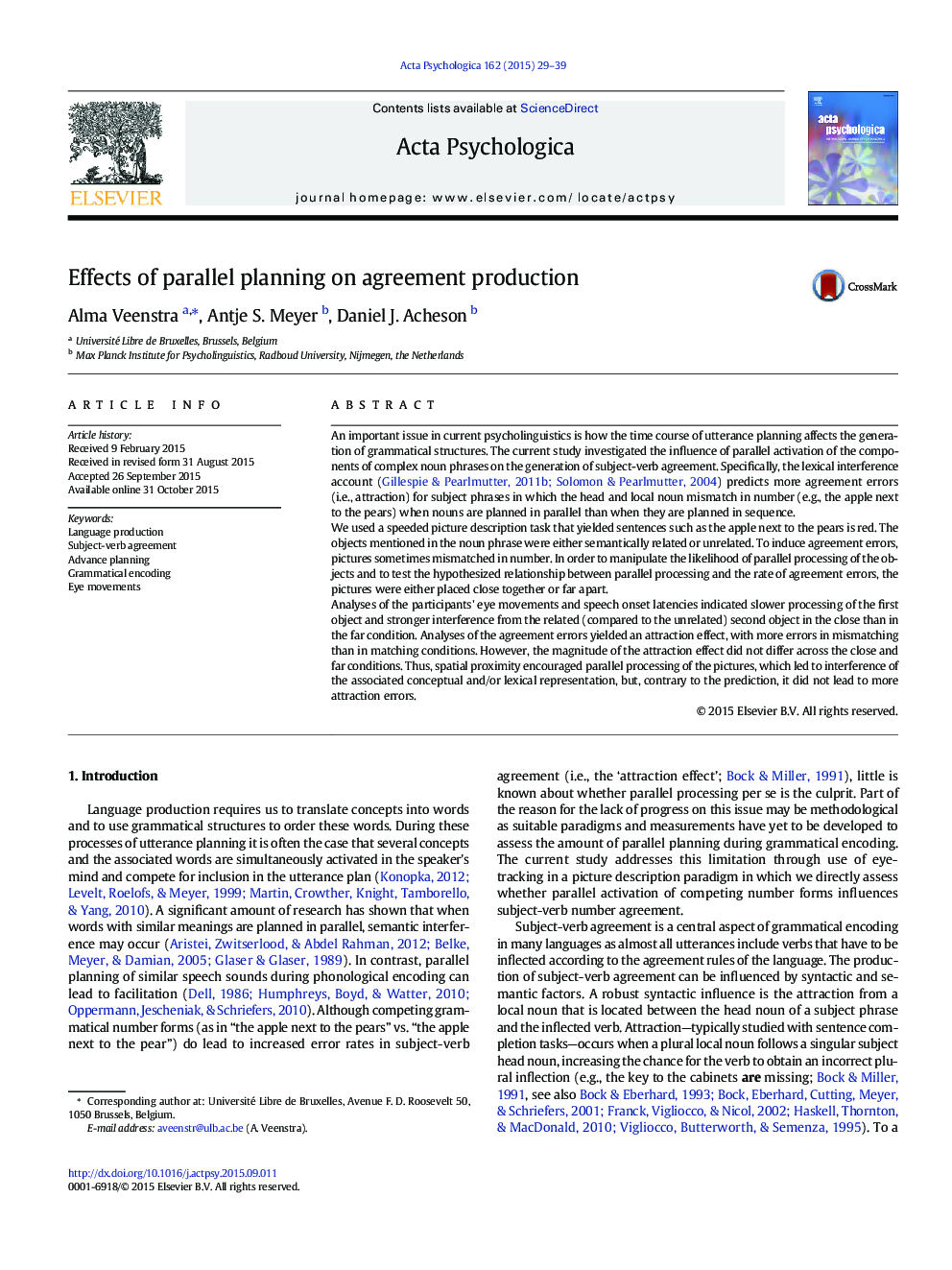| Article ID | Journal | Published Year | Pages | File Type |
|---|---|---|---|---|
| 919643 | Acta Psychologica | 2015 | 11 Pages |
•Use of a novel picture description paradigm to study grammatical agreement in language production•Manipulation of the time course of object processing through variation of their spatial proximity•Evidence indicating the time course of object processing does not affect the rate of agreement errors.
An important issue in current psycholinguistics is how the time course of utterance planning affects the generation of grammatical structures. The current study investigated the influence of parallel activation of the components of complex noun phrases on the generation of subject-verb agreement. Specifically, the lexical interference account (Gillespie, M. and Pearlmutter, N. J., 2011b and Solomon, E. S. and Pearlmutter, N. J., 2004) predicts more agreement errors (i.e., attraction) for subject phrases in which the head and local noun mismatch in number (e.g., the apple next to the pears) when nouns are planned in parallel than when they are planned in sequence.We used a speeded picture description task that yielded sentences such as the apple next to the pears is red. The objects mentioned in the noun phrase were either semantically related or unrelated. To induce agreement errors, pictures sometimes mismatched in number. In order to manipulate the likelihood of parallel processing of the objects and to test the hypothesized relationship between parallel processing and the rate of agreement errors, the pictures were either placed close together or far apart.Analyses of the participants' eye movements and speech onset latencies indicated slower processing of the first object and stronger interference from the related (compared to the unrelated) second object in the close than in the far condition. Analyses of the agreement errors yielded an attraction effect, with more errors in mismatching than in matching conditions. However, the magnitude of the attraction effect did not differ across the close and far conditions. Thus, spatial proximity encouraged parallel processing of the pictures, which led to interference of the associated conceptual and/or lexical representation, but, contrary to the prediction, it did not lead to more attraction errors.
